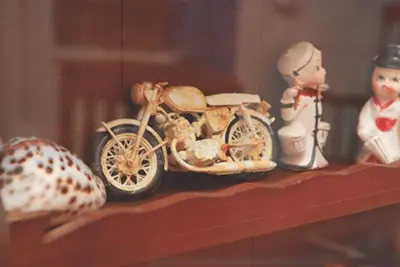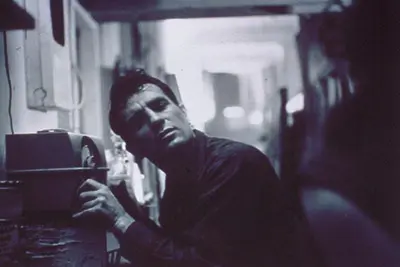Libraries Compile Beat Literature Collections into One Research Space
 Image by Ed Brennen
Image by Ed Brennen
10/18/2016
By Ed Brennen
As a native of Lowell, sophomore psychology major Stephanie Carnazzo is relatively well-versed in the life and times of her hometown’s most famous literary son, Jack Kerouac.
“We heard about Kerouac a lot in high school,” says Carnazzo, who, like Kerouac, attended Lowell High. “We read a lot of his poems — not everything, because he wrote a lot.”
Kerouac wrote more than 30 books of prose and poetry, in fact — a canon that helped define the “Beat Generation.” For those wanting to learn more about Kerouac and his contemporaries, the UMass Lowell Libraries have brought their Beat literature collections together into one research space at the new Kerouac Room at the UMass Lowell Center for Lowell History.
“We’re hoping this generates a lot of interest by having all of the materials from Jack and his cohorts in the Beat Generation together,” says Libraries Program and Project Coordinator Mehmed Ali, who credits University Archivist Tony Sampas for compiling the collection.
 Image by Ed Brennen
Image by Ed Brennen
The Kerouac Room’s shelves are stocked with the university’s existing works, which include donations from Kerouac’s first wife, Frankie Edith Parker, and a collection of oral histories from Kerouac biographer Gerald Nicosia. There also are more recent donations from the “Lowell Celebrates Kerouac!” organization and author Paul Marion, retired executive director of community relations at the university.
Tia Struble, a freshman honors student in business administration from Franklin, was interested in checking out the Kerouac Room, since she will be reading one of his books for her first-year honors seminar “Text in the City.”
“It’s interesting to learn about the city’s roots, especially now that I’m living here,” says Struble, who was at the center researching Lowell’s mill girls when she stumbled upon the Kerouac Room’s dedication ceremony, which helped kick off the weeklong Lowell Celebrates Kerouac! Festival.
The event also featured a sneak preview of the center’s updated website, which is being improved with the addition of new digital content.
 Image by Ed Brennen
Image by Ed Brennen
Megan O’Brien, a sophomore clinical laboratory sciences major from Hudson, N.H., and Carnazzo have been working with volunteer archivist Brad MacGowan to scan and upload nearly 14,000 primary documents that help tell the story of Lowell from its founding in 1826 up until the Civil War.
“We’re making the information more accessible and easier to navigate,” O’Brien says.
The Kerouac Room isn’t the university’s only shrine to the “On the Road” author. Last fall it opened an exhibit called “Kerouac Retrieved” at the Allen House featuring personal items from his last residence in St. Petersburg, Fla.
The Center for Lowell History, which is part of the university’s library system, features special collections and archives that focus on historic and contemporary issues of the city, including industrialization and immigration. It is located inside the Patrick J. Mogan Cultural Center at 40 French St.




